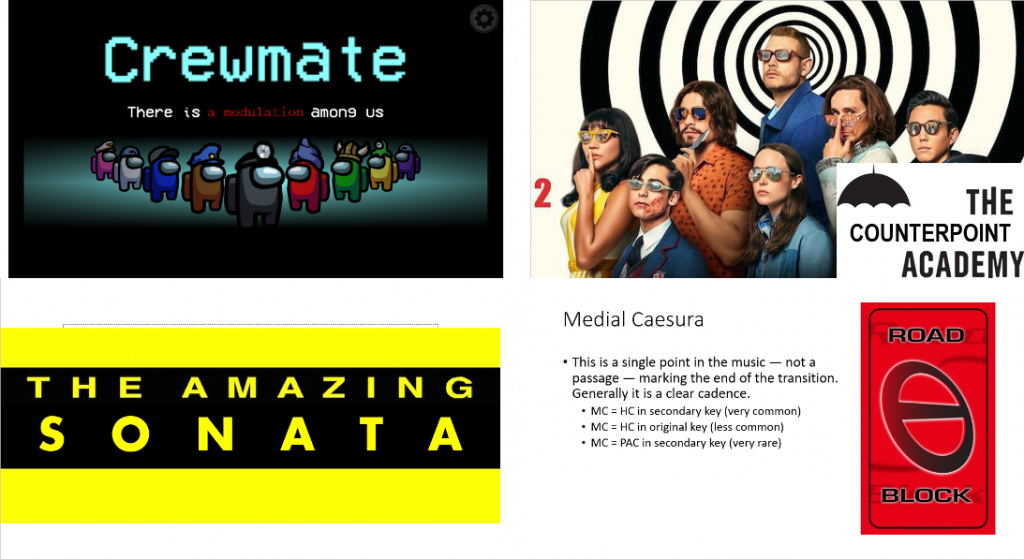By Megan Lyons
In March 2020, when academic institutions across the country shifted to online instruction, instructors faced a quandary. They could either be passive, simply transferring their in-person teaching methods to an online environment, or they could be active, innovating their lessons and striving to connect with students across this new modality of teaching. Personally, I chose the latter, but wasn’t sure exactly how I could accomplish this task. I knew that many students felt disconnected from their studies, their instructors, and their classmates in this online learning environment. If they could feel connected to their studies once again, it may have a positive influence on their academic and personal life, as evidenced in the #ISeeMe movement.

When I first began teaching at the collegiate level, I wanted my students to truly feel welcome and included. I asked them all to submit their favorite song, which I would collate into a pre-class playlist. I saw the excitement as a student entered the room to their favorite song; it showed how relating to my students, even on a micro-scale, positively influenced their classroom experience. However, this was merely a pre-class strategy; students desire to see themselves in the subject matter they study. How do instructors accomplish this, especially if the subject matter is intrinsically tied to the past?
On the first day of online instruction, I asked my students which movies and tv shows they had binge-watched their spring break. A short debate on the allegations in Netflix’s Tiger King immediately lifted spirits and engaged everyone. From that class forward, I crafted each lesson around some element of pop culture and incorporated those visual images into my presentations. The purpose of this was not just to grab my students’ attention each time they saw the theme of the lesson, but to relate abstract concepts to visual cues my students could easily remember. In Psychology Today, Dr. Haig Kouyoumdjian wrote, “words are abstract and rather difficult for the brain to retain, whereas visuals are concrete and, as such, more easily remembered.” Though the examples below were used to teach music theory, this concept can be applied to any subject in every classroom.
Animal Crossing, a popular game many students played at the beginning of the pandemic, was a common topic of conversation before class. By editing screenshots from the game, I was able to connect a confusing concept to a favorite game of my students. Many of them still use the visual cue of a bridge from the game in order to remember the function of a pivot chord. This is a take on the concept of elaboration, a learning practice aimed at making meaningful connections and associations to enhance memory retention.

When the second season of the popular Netflix show The Umbrella Academy was released, my lesson on 16th century counterpoint incorporated characters and memes from the show. First species examples featured the character “Number One,” and the overly complicated Fifth species featured the equally chaotic character “Number Five.” After the video game Among Us grew in popularity, I referenced it often and incorporated the term “sus” into my vocabulary. For example, when a new chord we hadn’t seen before appeared, we all labeled it as “sus” and called a meeting to discuss as we would in the game. The Amazing Race became the perfect foundation for teaching Sonata Form, the complicated structure employed in many classical pieces of music which takes students on a journey similar to that of the tv show.

In his 2019 article “Humor, Learning, and Memes”, Michael Cundall writes, “Students respond to engaged instructors. If you’re engaged, if they see you laughing and playing with content, they will appreciate it.” There are many ways to engage with your students and lesson content, incorporating pop culture is only one of them. I enjoy creating these themed lessons, maybe even more than my students enjoy seeing them. Incorporating humor into lesson planning is not a new concept, as teachers have been successfully incorporating cartoons and jokes into their lessons for decades; however, that humor was often related to the instructor rather than the student. Student-centered learning can and should be expanded to include student-centered humor. Lessons themes which are chosen based on students’ interests are only the beginning.
Instructors often ask students to define a concept in their own words, to ensure that they have fully grasped the topic. When I asked my students to do this, they often incorporated slang words, some I knew and others I didn’t. As I caught up with the times and learned words like “yeet” and “periodt,” I realized that my students were truly understanding what we were learning – just in their own language. If a student can understand a concept in their own language, they can eventually associate it with the true technical term.
Memes, slang, and pop culture are all useful teaching tools – they incorporate humor and make your content appear more relevant to students. During these difficult times, we all need a laugh and a smile – if we can get these while teaching and learning, we are even luckier.